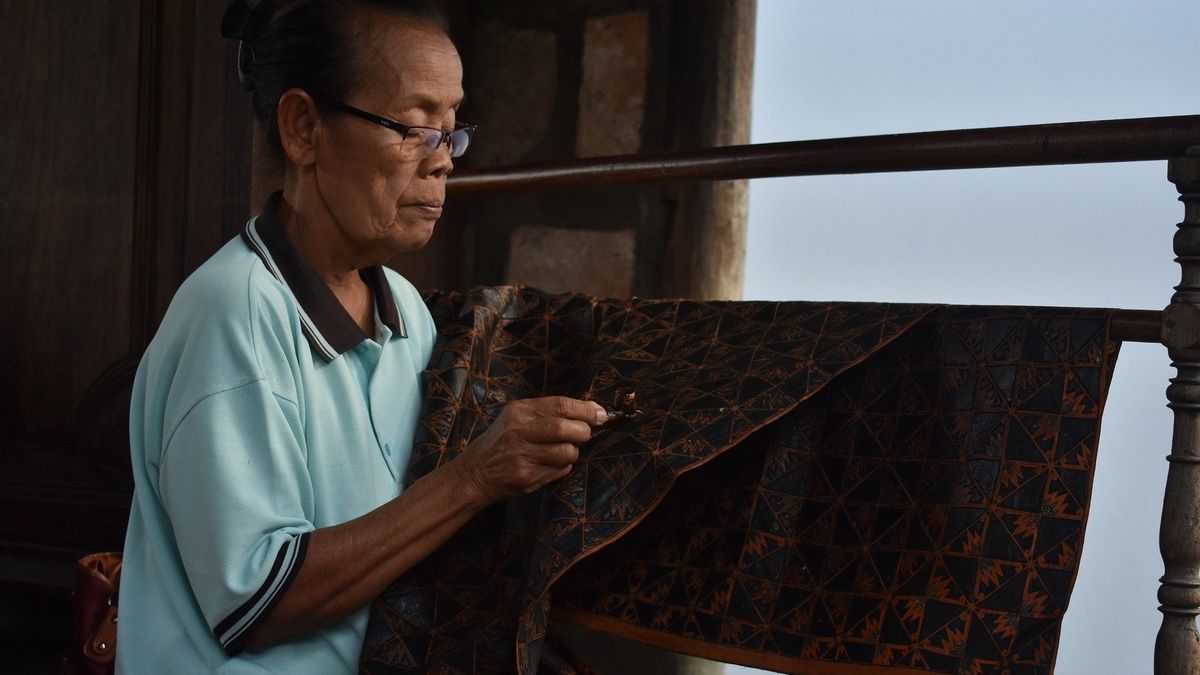JAKARTA - The news agency from China, Xinhua News has straightened its video upload stating that batik is a traditional craft from the Bamboo Curtain country. Where previously the video upload on his official Twitter account was showered with comments from Indonesian citizens.
In the 49-second video uploaded via Twitter, @XHNews, it is explained that the batik process is a traditional handicraft made by ethnic groups in China. Various motifs were made, both on cloth and on hats, made by craftsmen from China.
"Batik is a traditional craft that is common among ethnic groups in China. Using melted wax and tools such as a spatula, people dye cloth and heat it to remove the wax. See how ancient crafts developed in modern times," wrote Xinhua with the hashtag #AmazingChina.
The ancient Chinese handicraft of wax printing is highly skilled and time consuming. The craft is also known as batik, a word with Indonesian origin that refers to a wax-resist dyeing technique practiced in many parts of the world. Thanks to @Kemlu_RI https://t.co/nDHJrqspqD
- China Xinhua News (@XHNews) July 13, 2020
Suddenly, the video, which was uploaded on Sunday, July 12, was flooded with thousands of comments from Indonesian citizens. They took issue with the use of the word 'Batik' which refers to Indonesia's cultural heritage which has been recognized by UNESCO, since 2 October 2009.
"Don't use the word Batik for your own wax printing. It has been known for Indonesian wax printing for centuries," commented an Indonesian netizen.
"The word Batik must have come from Indonesian Java. But this art / technique may have been found in various countries before the 4th century. So that Batik is indeed Indonesia, but art / technique is the world," commented the netizen straightening the use of the word Batik in handicrafts claimed by China.
Responding to the news narrative from the video he uploaded was wrong. Xinhua re-posted the video with an improved narrative.
"The ancient Chinese wax printing craft was very skillful and time consuming. This craft is also known as batik, an Indonesian word that refers to the wax-coated coloring technique practiced in many parts of the world," wrote the Chinese media while tucking in his gratitude for the correction. from @Kemnlu_RI.
BatikBatik itself is so attached to the daily life of the Indonesian people. When translated, the vocabulary of 'Batik' comes from the Javanese language, namely 'amba' and 'Titik', or it can be interpreted as a traditional art from Javanese ethnic craft.
On the UNESCO official website, it is stated that batik is a technique, symbol and culture attached to hand-colored cotton or silk fabrics. This cultural heritage is officially recognized by UNESCO as Cultural Intangible Human Heritage in Abu Dhabi, United Arab Emirates. Followed by the designation of October 2 as National Batik Day.
Generally, batik has various styles with different meanings, depending on the manufacturing technique and the area of origin. Not only is the hand-written batik technique using hot wax in making batik patterns or patterns, there are also dyeing techniques to produce the desired fabric color or batik pattern.
The large variety of Indonesian batik patterns is said to be due to the influence of various factors, ranging from Arabic calligraphy, European garlands of Chinese doves, Indian peacocks, to Japanese cherry blossoms.
The English, Chinese, Japanese, Arabic, and French versions are automatically generated by the AI. So there may still be inaccuracies in translating, please always see Indonesian as our main language. (system supported by DigitalSiber.id)










